Manicure Memoir: Reflecting on the History of Vietnamese Nail Salons
On the rare occasion that I got my nails done, it was usually with my mom who insisted we made sure to pamper ourselves from time to time. Though I wouldn’t have considered myself to be "girly" when I was younger, going with my mom to get manicures was always a treat. My mom and I have lived all over San Jose and have gone to many places for manicures. I noticed that most if not all of them were owned by Vietnamese women.
Out of all the nail salons in the United States, 51% are owned by Vietnamese Americans as of 2015. San Jose is known to have one of the largest Vietnamese populations in the U.S. Growing up, I wondered what being Vietnamese meant to me. I thought about my community and how large of a presence the Vietanamese people have in San Jose. Then I wondered how it came to be: how Vietnamese women came to dominate a whole industry. As it turns out, the origins of the first Vietnamese women to enter the manicuring industry can be traced back to a small town in Northern California.
Hope Village was the first nonmilitary refugee camp established in 1972. It was located in Weimar, California, close to Sacramento. In 1975, after the Fall of Saigon, many refugees found themselves resettling in Hope Village, in hopes to begin their new lives away from all the chaos and trauma they had just experienced during the Vietnam War. But the anxiety of being in a new country combined with the pressure of figuring out how to support their families, many refugees had no idea where to start.
The women of Hope Village then met an actress named Tippi Hedren. An article from May 2015 by BBC News spoke to the actress best known for her acting in Alfred Hitchcock’s The Birds, whose help would soon ripple throughout Vietnamese communities all over the United States. Tippi Hendren had an inclination to help the Vietnamese refugees after learning about all the trauma and misfortune that had forced them out of their home country. Hedren became a relief coordinator and spent a lot of time with the women of Hope Village. During this time, manicures and pedicures were considered a luxury only accessible to rich women like Hedren and the women of the camp often complimented Hedren’s polished fingertips. Then an idea sparked in Hedren’s mind. She decided to take twenty women from the camp who wanted to learn how to do nails. She got them free classes at a local beauty school, where they took a bus from the camp every day. Once these women graduated, Hedren sought out jobs for them in Southern California.
In the BBC article, Hedren told the reporter, "There was hope in the idea that maybe I could help these incredibly wonderful women. And I had no idea it would reach the gigantic numbers." The phenomenon of a whole industry being dominated by Vietnamese people was not granted by a miracle. My community’s recipe for success has always been hard work, resilience and determination. Those twenty women from Hope Village eventually went their separate ways, but through the tight networks in Vietnamese American communities, the opportunity of manicuring spread very quickly. Many Vietnamese manicurists opened their own businesses, offering cheaper prices than the fancier salons. This revolutionized the industry, making manicures more accessible to middle class Americans. Everyone now had a chance to get manicures and feel good about themselves.
Another revolution that followed was the establishment of opportunity for future generations of Vietnamese Americans in the beauty industry. Advance Beauty College is just one of the beauty schools that opened in the 2000s to offer classes in Vietnamese. This led to state tests for a manicuring license to be available in Vietnamese as well. Today, the nail industry is worth $8.5 billion dollars and it is amazing to think about how the Vietnamese community used their power of networking to create a space for themselves in a fast-paced American economy. As I reflected on what learning about this meant to me, I remembered a very popular comedy skit that I watched many times when I was younger.
In 2009, Anjelah Johnson, a San Jose-based comedian, performed a stand-up comedy skit titled “Nail Salon” which immediately blew up all over YouTube. Johnson told a story about her trip to a nail salon. Her manicurist in the skit is named Mei Ling, which is not a Vietnamese name I have ever heard of. Throughout the skit, she performed with an accent mocking how Vietnamese people speak English.
"That's okay honey, only four dollar more, that's okay."
"Do you like crital jail? (crystal gel)"
Johnson continued to play with the stereotype that nail salon workers talk about customers in Vietnamese and that they try to blindly upsell you. When this video came out, not only did our current society allow for such jokes, but making fun of Asians like this wasn’t even considered racist.
This skit was the first time I’ve seen anything that connected me to my Vietnamese American identity. At the time, I honestly thought it was hilarious and though I grew up in a diverse community, many of my peers would also agree. It became something that I used to make people laugh. In a way, I felt connected to being Vietnamese because I could do a Vietnamese accent. When I performed it for people and got positive feedback, it made me feel almost proud of it. Looking back, I realized how confused I was with my own identity. My subconscious was searching for something that felt familiar.
When I think deeper about the reasons why I joined in the mocking of my community, a greater lesson unfolds. Growing up Vietnamese American is like being born with a giant puzzle to put together. The puzzle is confusing and there is no one to tell you how important it is to figure out this puzzle. No one told me that this puzzle is a tool to help me discover who I am and how I came to be. So I go about growing up, noticing how I’ve never seen myself represented in the right way. I’ve only seen bits of myself in offensive comedy skits and stereotypical roles in movies.
In my Asian American studies classes, I learned about the struggles of my community and reflected with my family about our history. I grew up in a family that wanted the best for their kids, but underneath the hard work I saw my family put in, there was a lot of pain and trauma from their experiences of being refugees. So much of this pain is buried away in hopes to try to forget about the hardest times of their lives. I could be upset at the fact that I had to learn about the Vietnamese War on my own, but I’ve grown to understand the value of being strong and hiding weaknesses that are embedded in Vietnamese tradition. These days I often think about that puzzle. I’ll dust the puzzle off from under my bed and start to work to piece it all together. It is going to take a lot of patience and resilience to finally see the big picture, but it is a journey I am willing to embark on.
My greatest takeaway from learning about nail salons is that there is so much power in being part of a community. The Vietnamese American refugees who decided to take a chance with manicuring ended up jumpstarting a whole industry with the support and help from their friends and families. And in return for helping one another, families were now able to send money back to their relatives still in Vietnam and support their children who would grow up to have so many more opportunities in this country. I will always be grateful for the trailblazers of the nail salon industry and I will always be proud of my community and the things they have accomplished in America.
Graphic and illustration by Megan Cheung

